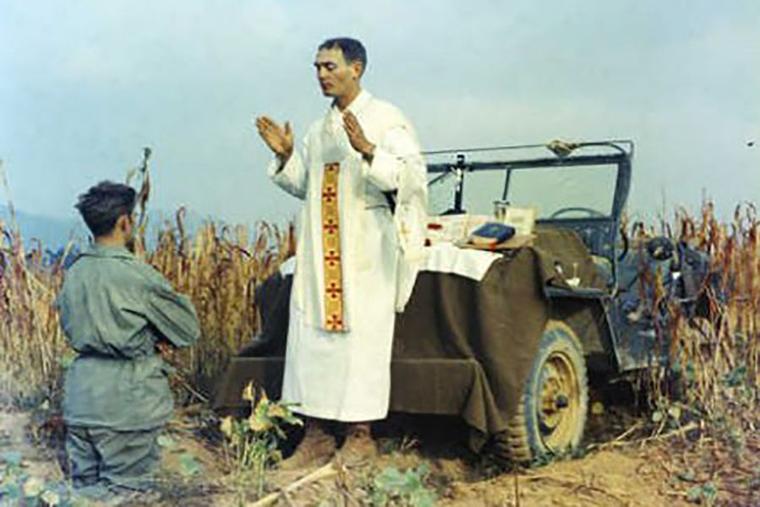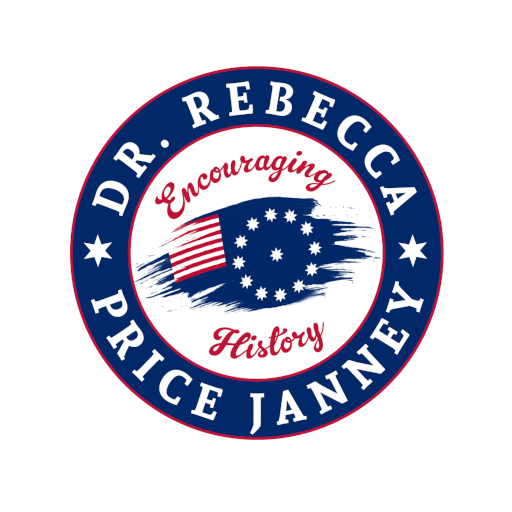
In 1950 after North Korea’s communist regime invaded the southern part of the peninsula, General Douglas MacArthur led his troops in a brilliant liberation campaign. He landed daringly at Incheon and drove the North Koreans out of besieged Seoul. South Korean President Syngman Rhee proclaimed, “The Korean people will always cherish the memory of your bold leadership in defense of liberty.”
MacArthur boasted that the United States and UN forces would utterly destroy the communists, and our fighting men would be home by Christmas. American soldier Charles Ross remembered, “We had been told that the war was all but over, and we were going to do an Armistice Day parade for General MacArthur in Tokyo on November 11, 1950.”
It would be three more Christmases before the Korean War ended in a stalemate. When the Chinese entered the conflict on North Korea’s side, the fighting became an entirely new ballgame.
On October 25th, Chinese troops advanced against the UN forces at Unsan. Soldier Henry Burke told the Korean War Legacy Foundation, “[The Chinese] tried to entrap us. That was their goal.” His compatriot Bruce Ackerman recalled, “Well, the Chinese… surrounded us. We were totally surrounded. The only way out was to go out the way we came…
As I was walking through, trying to get around [a] roadblock, I heard a BOOM. I don’t know what it was, whether it was a mortar shot or a rifle grenade… It blew me up in the air, but I landed on my feet! And then my feet kept going. [I thought] this is it… my time has come… they’ll read about me in the papers.” Ackerman survived.
When Charles Ross and his company arrived in Unsan, he says, “There was smoke in the air… like the forest was on fire. We weren’t much concerned, because we had seen fires the whole time we’d been in Korea.” His attitude abruptly changed just after midnight on November 1st when fire suddenly rained down upon them from all directions. “[The Chinese] had infiltrated our area… I rolled down the hill, and yelled at everybody, ‘Get under the bridge!’ … I could hear rounds hitting the bridge, the water… we had no leadership, we became all disorganized and people just went every direction. It was a terrible night… Everything was on fire.”
A few weeks later, General MacArthur started a massive offensive toward the Chinese border. American Julius Becton Jr. said: “At about 8:00 p.m., the Chinese Communists attacked in massive force. They swarmed over the hills, blowing bugles and horns, shaking rattles and other noisemakers, and shooting flares in the sky. They came on foot, firing rifles and burp guns, hurling grenades, and shouting and chanting shrilly. The total surprise of this awesome ground attack shocked and paralyzed most Americans and panicked not a few.”
It was obvious the men would not be home by Christmas, some at all.
In the disastrous conflict, the Rev. Emil Kapaun of Pilsen, Kansas served as chaplain for the 3rd Battalion, 8th Cavalry Regiment, 1st Cavalry Division. He had also served as an Army chaplain in World War II. According to the Catholic Diocese of Witchita:
“He quickly earned a reputation for being a fearless soldier who risked his life to minister to the men fighting on the front lines. Along with praying with men in foxholes and saying Mass on the battlefield (oftentimes using the hood of his Jeep as the altar), Chaplain Kapaun would risk his life to administer the sacraments to the dying, to retrieve wounded soldiers, and to bury the dead- ally and enemy alike.
“Numerous times he barely escaped with his life. On one occasion his smoking pipe was shot out of his mouth by a sniper’s bullet. On another, he lost all of his possessions, including his Mass kit and Jeep. After this, he always carried the Blessed Sacrament and the vessels for Mass on his body, along with his confession stole and holy oils.”
On the night of November 1, 1950, while protecting the town of Unsan, Chaplain Kapaun’s outfit was attacked from all sides by the combined Communist forces. The priest went about anointing the dying and dragging the wounded to safety. He was captured once, but he escaped when US soldiers shot his captors.
He was offered a chance to retreat to safety, but Father Kapaun and an Army Medic, Doctor Clarence Anderson, decided to stay and look after the wounded.
Seeing a wounded soldier about to be shot by a North Korean, Father Kapaun rushed over, pushed the gun aside, and picked up the wounded GI, Sergeant Herbert Miller. In disbelief at the chaplain’s bravery, the North Korean let the two live.
Late in the day of November 2, Communist forces captured the group and marched them between 60-100 miles to a prison camp at Pie-oh-ka-tong. Many had difficulty walking due to frostbitten feet and battle wounds. Those who lagged were often left for dead or shot, but Father Kapaun went along the line encouraging the soldiers to help carry those who couldn’t walk on their own, all the while doing his own part to carry the wounded.
Because of his example, many soldiers lived who would have otherwise died. Veteran Bob Wood said the priests’ “indomitable spirit served as a rallying point for the other men in captivity. . .He was the finest man I ever knew.” Another fellow captive, Mike Dowe, said “A good number of those that survived, I’d say at least half of them, really owe their lives to Father Kapaun, me included.”
Every day Father Kapaun got up at 5:30 a.m., even in the -20°F temperatures of winter, gathering sticks for fires. He’d used them to melt snow into clean water for the men to drink. He also made vessels out of old iron sheeting into containers to launder the clothing of the sick and wounded and for storing purified water. He was known to slip out of the camp to scrounge for corn, salt, millet, and soybeans for the starving POWs.
When he wasn’t doing those deeds, the priest made the rounds of the prisoners’ huts, giving aid to the sick and wounded, picking lice off men, washing the clothes of the incontinent, and bathing those too ill to do so themselves. When men died, he often volunteered for the burial duty so he could say a few quick prayers over their graves.
During the mandated indoctrination sessions held twice a day, the Communist captors would try to convince the POWs of the “evils” of capitalism and religion. Even when the guards yelled at the prisoners, Father Kapaun calmly stood and refuted their claims. One officer, Lt. Walter Mayo, told a story of the Communists taunting Father Kapaun. They argued that God must not exist since He was doing nothing to save them. The other POWs were buoyed by Father Kapaun’s response: “God is as real as the air you breathe but cannot see; as the sounds you hear but cannot see; as the thoughts and ideas you have but cannot see or feel.” At other times he made jokes to lighten the mood in the camp. Father Kapaun was determined to keep the men trusting that they would make it out alive.
Although public prayers were strictly forbidden, after dark Father Kapaun would sneak around to say prayers with the men. He petitioned God not only for their daily material and spiritual needs, and for their deliverance and liberation, but he led the men in prayers for their captors, that they be delivered from the evils of Communism. He minister to men of all faiths, adapting his prayers for their needs. Men who were struggling would approach Father Kapaun for his counsel, and all walked away feeling lightened of at least part of their burden and able to fight another day.
Father Kapaun was a shining light in the darkness of the Pie-oh-ka-tong prison camp.
With his selfless acts and indomitable spirit, he gave the other prisoners hope despite the tortures they experienced. His Chinese captors considered him an agitator and propagandist, but their attempts to scare, threaten and humiliate him failed. They were afraid to eliminate him or stop him for fear the other prisoners would start a rebellion. Although it was forbidden, Father Kapaun led an Easter Service for the men in March 1951, reminding them of the sufferings that Christ endured for their sake and the new life brought about by His Resurrection.
That was right before malnutrition and pneumonia began taking a toll on him. Before he was taken to an old pagoda to be put in isolation, he told fellow POW Mike Dowe, “Don’t cry for me. I’m going to where I’d always wanted to go, when I get there, I’ll say a prayer for each of you.” Kapaun died at the age of 35 on May 23, 1951.
After the war, veterans from his unit campaigned to have Kapaun receive the Congressional Medal of Honor; it was awarded posthumously in 2013. This is the highest award given to a member of the military, and Kapaun is just one of five Chaplains to have received it since the Civil War. Pope John Paul II pronounced the priest a “Servant of God,” which is the first step toward sainthood.
This past week, Father Kapaun’s remains were identified, according to the Pentagon’s Defense POW/MIA Accounting Agency.
Thank you for reading this story of a great American. I’m happy to announce that my next novel, East of the Sun, which takes place in a Korean War MASH unit, will be published early next year. ( am indebted to the Catholic Diocese of Kansas, Father Kapaun website and other Korean War sources for information about this American hero.)

Leave a Reply